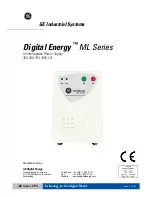
BP-LFP-2725(D)
Revision 1-2
14
E5 Deep discharge
When the battery is not in use, the BMS switches to a power-saving mode with particularly low self-consump-
tion. Thereby the MOSFET main switch and various functions are turned off to protect the cells from deep
discharge.
PF shutdown voltage: If a cell voltage is below the limit(1.9 V) the BMS turns into a permanent error state. A
charging process is then no longer possible. The core pack is deeply discharged.
E6 SMBus
Various data of used balancer IC are available via SMBus. This is integrated into two-wire SMBus V1.1 standard.
E7 Discharging process
During discharge process, the pack voltage drops from the end-of-charge voltage (100 % SoC) to end-of-
discharge voltage (0 % SoC). Depending on current, the remaining capacity decreases continuously. If the
battery management system detects an error, it will be shut down as described in Section 'Functionality of BMS'.
E8 Charging process
Before using the charger for the first time, it is essential to read the operating instructions for the charger used!
General information
The charging process takes place according to the CC-CV procedure. After a charging phase with constant
current (CC, Constant Current) up to the end-of-charge voltage, the battery is charged with a constant voltage
(CV, Constant Voltage) and sinking current until the end of charge. Once the loading process has been success-
fully completed, pack-specific parameters (e.g. capacity etc.) are updated and the core pack is considered fully
loaded. If the battery management system detects an error, a shutdown occurs as described.








































